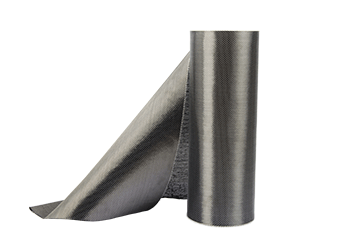Solutions
Horse Construction offers full range of structural strengthening materials with technical supports, documentation supports, products supports, project supports.
Reinforced concrete column with carbon fiber reinforced polymer(CFRP)

1.Mechanism analysis of CFRP reinforcement of reinforced concrete columns
When the reinforced concrete column is subjected to axial pressure, the member is caused by the lateral expansion caused by the very small limit value. If lateral restraints can be created around the member to prevent such lateral expansion of the compression member, the compression bearing capacity and deformation ability of the member can be improved.
Reinforced concrete columns reinforced with carbon fiber CFRP produce a constraint between the column concrete and CFRP reinforcement. The core concrete in the plastic zone is in a three-dimensional stress state due to the constraining stress of the lateral interface. Compared with the unidirectional stress state, the ultimate compressive strain and bearing capacity of concrete will increase. When the bending bearing capacity of the column does not decrease significantly, the influence of instability is not considered, and the reinforced concrete column after reinforcement has greater ductile deformation and energy dissipation capacity.
2. Stress distribution of reinforced concrete columns under CFRP wrapping
2.1. CFRP forms axial tensile stress after CFRP's lateral restraint on reinforced concrete columns, and CFRP's bending resistance is extremely weak (generally not considered). The ultimate axial compressive strength of the rectangular column under CFRP wrapping constraints is greatly reduced compared to the column, mainly due to the uneven lateral constraint stress. The lateral constraint of the center of the rectangular column is weak, and the lateral stress concentration constraint at the corner is large. Only when the lateral plastic deformation occurs, the lateral constraint stress of the CFRP on the reinforced concrete column can grow extremely rapidly.
2.2. Since CFRP's constraints on reinforced concrete columns are interface constraints, only when the concrete expands laterally outwards (produces plastic deformation) can CFRP produce constraining stress on the concrete. Therefore, the column ring outsourcing CFRP exhibits a two-stage stress process when subjected to a load as follows. In the first stage, the axial compression stress of the concrete is small, the lateral deformation is small, and the CFRP stress is small. In the second stage, as the load increases, the column concrete deformation increases, the CFRP hoop stress increases significantly, and the hoop restraining force increases rapidly until the CFRP reaches its ultimate tensile strain.
2.3. Stress-strain relationship between constrained concrete and unconstrained concrete
3. Carbon fiber cfrp reinforced concrete column technology and construction key points
3.1 Scope of application and working conditions
CFRP reinforced reinforced concrete columns are suitable for cylindrical or small-section rectangular columns (the section length is generally less than 800mm), which can greatly increase the axial compression load-bearing capacity of reinforced concrete columns when they are not unstable. The prerequisite for reinforcement is that the core concrete of the component is not damaged, and it still has a certain bearing and deformation capacity.
3.2 Main points of column reinforcement construction with carbon fiber
3.2.1. Unloading before reinforcement of reinforced concrete columns is very important. When CFRP is outsourced to concrete members, there is a strain lag with respect to the surface of the concrete column, and it often happens that the CFRP has not been broken and the concrete has been crushed. This effect reduces the reinforcement effect of CFRP, and cannot fully exert the high-strength tensile properties of CFRP.
3.2.2. The radius of the corner chamfer of the rectangular column should not be less than 20mm. It is better to repair the convex side of the column side to reduce the concentrated stress of CFRP in the corner.
3.3.3. The repair work on the surface of concrete members is extremely important, which directly affects the CFRP's effect on the lateral restraint of concrete.
You can find anything here you are in need of, have a trust trying on these products, you will find the big difference after that.

High strength, unidirectional carbon fiber wrap pre-saturated to form a carbon fiber reinforced polymer (CFRP) wrap used to strengthen structural concrete elements.

High strength, unidirectional carbon fiber fabric pre-saturated to form a carbon fiber reinforced polymer (CFRP) fabric used to strengthen structural concrete elements.

High strength, unidirectional carbon fiber sheet pre-saturated to form a carbon fiber reinforced polymer (CFRP) sheet used to strengthen structural concrete elements.